Tree diseases have a way of looking ”normal” to the untrained eye, but upon closer inspection, you could find that a tree in your yard actually needs a little special attention. But how do you keep your yard in top shape, if you don’t know what to look for when it comes to tree diseases?
Tree diseases are illnesses in trees and shrubs caused by fungi, bacteria, and environmental stress such as extreme temperatures, drought/flooding, broken branches, and pollution.
Of course, they may be hard to identify. Understanding tree diseases can be tricky for most homeowners.
How do you tell the difference between leaf spot, or cedar apple rust and the change-of-season from summer to fall? Here’s what you need to know in this detailed guide on infected trees and how to identify common signs of disease.
Tree Diseases 101: What Diseases Kill Trees?
Tree disease is far more common than most homeowners realize. Just because you keep your yard in top condition doesn’t mean that your trees and shrubs aren’t susceptible to infection.
Disease outbreaks are often seasonal (during the growing season), species-specific, and regional. A diseased tree is also bad news for your garden as its structural integrity can become compromised. This poses a hazard due to weakened, infected branches, as well as the tree trunk, and root system.
With all of this in mind, what are the common diseases that affect trees?
Tree Diseases can progress rapidly. As soon as you see signs that your tree is diseased call an Arborist to come take a look. If left untreated, over time the damage can become too extensive and the tree or shrub may not be able to be saved through disease treatments.
Need Help With Tree Diseases?
Or Call 703.573.3029 To Book An Appointment Via Phone
Common Tree Diseases In Our Area
American Chestnut Blight:
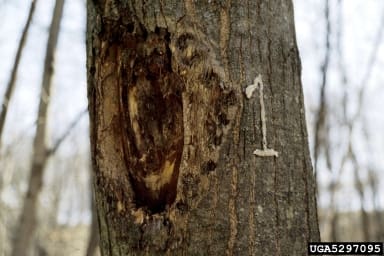
Joseph OBrien, USDA Forest Service, Bugwood.org
Caused by a fungus, this blight which has no cure has virtually wiped out the American Chestnut Tree.
In 1904, it was first noticed on the American chestnuts in the New York Zoological Park, now known as the Bronx Zoo. While Chinese chestnut trees weren’t very vulnerable to the blight, American chestnuts had little resistance and succumbed quickly. By 1950, the destruction was complete. The once most predominant and majestic tree of our Eastern forests has been reduced to a handful of pre-blight survivors struggling to survive. Occasionally you will see chestnuts pop up here and there; however, because the blight is still active they succumb quickly once they reach a certain size.
Scientists and foundations are working on ways to fight the blight and bring back American Chestnuts.
Targets: American Chestnut tree
Learn More About The Chestnut Blight’s Cultural Impact and The Effort To Create Blight Resistant American Chestnuts.
Anthracnose Disease:
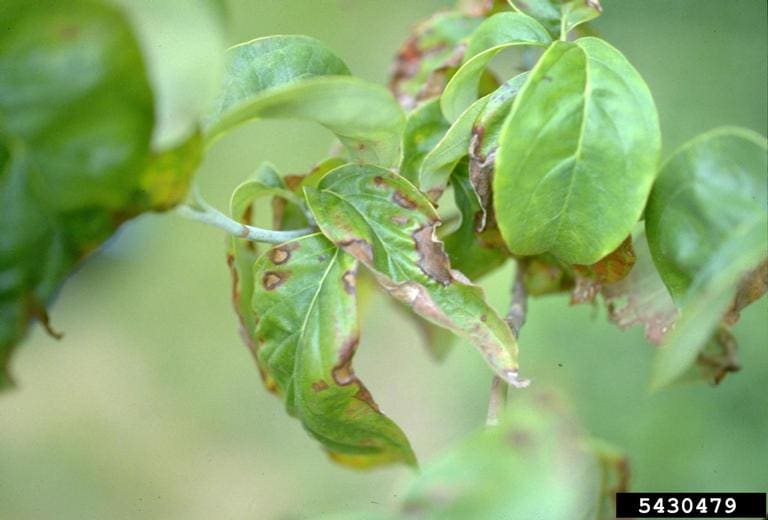
John Hartman, University of Kentucky, Bugwood.org
This is a fungal disease that impacts the stems and leaves of many susceptible plants and tree species. Some of which include sycamore, dogwood, oak trees, and maples. This disease tends to fester and grow during the wet and chilly spring season.
If this disease is left unchecked, it can cause serious damage to tree foliage and can also cause canker growth, while weakening stems and branches.
The worst part about this disease is that it’s a slow killer and will reduce the growth and size of your tree.
Targets: Sycamore, Dogwood, Oak, and Maple trees
Learn More About Dogwood Anthracnose
Apple Scab Disease
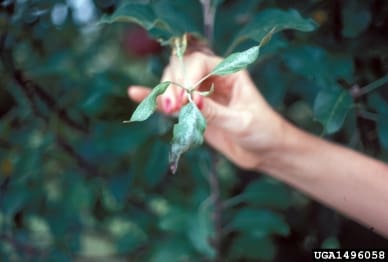
University of Georgia Plant Pathology , University of Georgia, Bugwood.org
Apple scab disease impacts the fruit of the tree and causes brown, sunken areas, while the leaves turn yellow and fall from the tree prematurely.
The infection usually takes hold in early spring, just as the leaves and fruit begin to re-grow and develop. While the tree may look like it’s healthy and developing, come July, disease symptoms will begin to appear. By the end of the summer, these trees have weakened and will not bear any healthy fruit or leaves.
Targets: Fruit trees, namely apple and crabapple trees
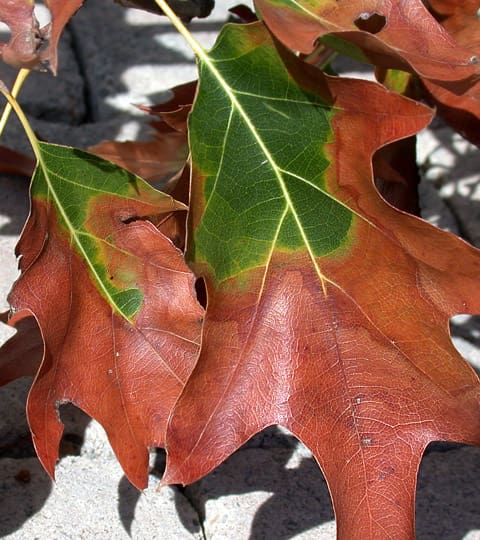
Bacterial Leaf Scorch:
Discovered in New Jersey in the early 1990’s, bacterial leaf scorch attacks shade trees and is caused by the xylem-clogging bacteria, Xylella fastidiosa. Xylem is one of the two types of transport tissues in trees; by clogging these tissues the bacteria restricts the flow of water from the roots to the crown of the tree. This dehydration causes the tree to appear to be under drought stress even when it has access to enough water.
If left untreated this disease will cause dieback, secondary invaders, branch death, and ultimately death.
Targets: Oaks, Elms, Sycamore, Sweet Gum
Learn More About Bacterial Leaf Scorch
Cedar Rusts:
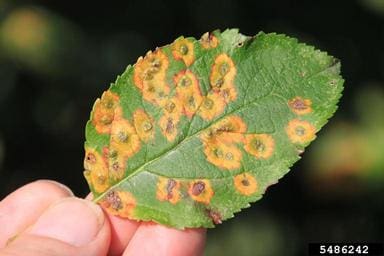
Elizabeth Bush, Virginia Polytechnic Institute and State University, Bugwood.org
This disease is also known as Cedar Apple Rust or Gymnosporangium juniperi-virginianae fungus. This type of fungal disease affects the leaves, twigs, and fruit of the cedar tree and apple trees, as the name(s) suggests. The fungi are dependent on these two species of tree to reproduce, survive, and thrive.
The fungus is spread via spores that travel to apple trees and fall on the leaf surface, thus infecting the tree. These brown spots on the leaves also produce spores that travel back to cedar trees and so the cycle continues.
Dutch Elm Disease:
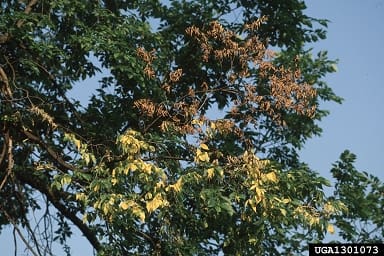
Joseph OBrien, USDA Forest Service, Bugwood.org
Dutch Elm disease is one of the most destructive shade tree diseases in North America. Caused by a fungus spread by the elm bark beetle, the disease infects the tree’s vascular system as well as inhibits the natural flow of water and sugar within the tree. This disease is common throughout the U.S. and can have a fatal effect on American elms.
Dutch Elm was first reported in the U.S in 1928, the disease is believed to have been brought over from the Netherlands in a shipment of logs. Out of the 77 million elms in North America in 1930, over 75% had been lost by 1989. To this day, the Elm population across the United States is still battling this toxic disease.
Dutch Elm Disease causes crown dieback and major discoloration of the outer layer of your trees, making them look dead. There can be signs of leaf wilting, curling and yellowing, premature leaf drop. It can eventually kill your tree.
Targets: Elm trees
Learn More About Dutch Elm Disease
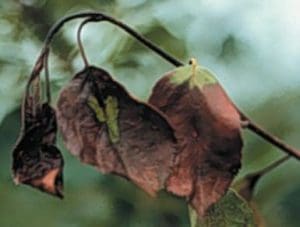 Fire Blight:
Fire Blight:
Native to North America, fire blight is a common and destructive illness caused by the bacterium Erwinia amylovor. The bacteria enters through open flowers and new shoots in the spring.
Fire blight causes leaves to blacken and curl giving a fire scorched appearance and will cause lesions on the fruit and cankers on the branches and trunk. Without proper treatment, infected trees will die.
Targets: Apple, Crab Apple, Pears, Hawthorn
Learn More About Fire Blight
Needle Disease:
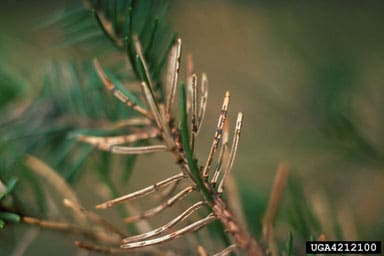
Minnesota Department of Natural Resources – FIA , Minnesota Department of Natural Resources, Bugwood.org
This is a common tree infection that impacts spruce trees. Also called needle browning, this disease can cause a number of issues and is generally induced by a fungal infection of the tree.
While this disease does not impact the structural integrity of the tree, it can spread to branches and cause perpetual needle browning, leaving your spruce tree(s) rather unsightly.
Targets: Spruce trees
 Oak Wilt:
Oak Wilt:
Oak wilt is a tree disease that targets oak trees and is caused by the fungus Ceratocystis fagacearum. Spread through insects and connections between roots, there are no resistant or immune oak species. This illness was first found in 1944 in Wisconsin but has now spread to 21 states. Oak wilt is devastating and can kill rapidly within a single season.
It’s systemic and fungal and impacts over 20 species of trees across the United States. Some of the most common areas for this tree disease include New York, Pennsylvania, Texas, South Carolina, and Minnesota.
You might be able to save a white oak tree from this disease, however, red oaks are particularly vulnerable.
Oak wilt causes leaf discoloration, wilt, defoliation, and ultimately the death of the tree from the top down.
Targets: All species of oaks. Red oaks succumb to the diseases faster than white oaks.
Learn More About Oak Wilt

Gerald Holmes, Strawberry Center, Cal Poly San Luis Obispo, Bugwood.org
Powdery Mildew Disease:
Caused by fungal pathogens, powdery mildew disease affects the surface of trees, producing white fungal threads and spores that spread. The fungus attacks young tissue within the tree, and as the infection grows, the infected areas turn brown and dry out.
Targets: Lilacs, Peonies, Dogwoods, or Crape Myrtle trees are especially susceptible in our Northern VA, MD, & DC areas

Verticillium Wilt:
Verticillium Wilt is a tree disease caused by the soil-borne fungi Verticillium albo-atrum and Verticillium dahliae. The fungus invades through the roots of susceptible trees and shrubs then spreads through the plant’s vascular system. Once the Xylem, the tree’s water transportation system, is infected it becomes clogged and water can no longer reach the tree’s leaves. Verticillium is common and affects several hundred species of trees and shrubs.
This disease has a wide-spread impact and can infect up to 350 different plant species, including deciduous trees, flowers, and any vegetables you’re growing in your garden.
The diagnosis of this infection can be challenging, too. This is because symptoms present differently from one plant species to the next. The best solution to keep this disease at bay is prevention!
Verticillium Wilt causes leaf curling, drying, small yellow foliage, leaf scorch, and slow growth. Often, the symptoms are seen on one side or section of the tree.
Targets: Ash, Azalea, Cherry, Certain species of Dogwood or Linden, Locust, Magnolia, Maple, Oak, and Redbud.
Learn More About Verticillium Wilt
 Sooty Mold & Honeydew:
Sooty Mold & Honeydew:
Honeydew is the excrement of plant sucking insects such as scale and aphids. Many homeowners confuse honeydew with sap. Trees do not drip sap. If you have “sap” dripping from your leaves it is honeydew and is a telltale sign of an insect infestation.
Sooty mold is a fungus that grows on top of honeydew and coats the leaves of your trees to the point where they can no longer absorb sunlight. This interrupts photosynthesis and the tree will not be able to produce the nutrients they need for survival. If your trees and shrubs are turning black you most likely have a sooty mold problem caused by an insect infestation.
Targets: The insects that cause honeydew and thus sooty mold to develop target hundreds of species. The most susceptible species in this are include; Maples, Oaks, Linden, Birch, Crape Myrtles, Ash, and Tulip Poplars.
Learn More About Scale
Learn More About Aphids
Thousand Canker Disease:
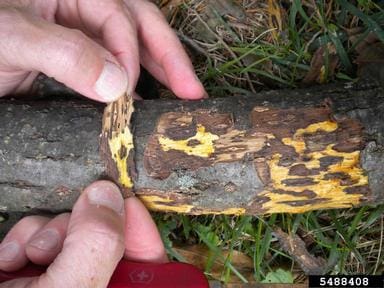
Elizabeth Bush, Virginia Polytechnic Institute and State University, Bugwood.org
Trees sick with canker diseases tend to live in the West of the U.S; however, this disease is also found in some southern regions of the country. This tree condition is a result of infection spread by twig beetles. It tends to form cankers around the galleries of trees.
The disease takes a few years to manifest and show outward signs of infection. However, the upper foliage of these trees may turn yellow and wilt prematurely. Unfortunately, once a tree has canker disease, it will most likely die within a few years.
Targets: Black walnut trees
 Leaf Spot Diseases:
Leaf Spot Diseases:
Leaf spot is a common term used to describe a number of tree diseases that leave spots on tree and shrub foliage. These tree diseases are most commonly caused by fungi but can be caused by bacterial infections as well. One of the most well-known leaf spot diseases in our area is Anthracnose.
The main symptom of leaf spot diseases is spotting on the tree’s leaves. Spots will vary in size and color depending on the specific kind of leaf spot; however, most spots tend to be brownish.
Targets: Dogwoods, Ash, Oaks Sycamores, Maples, and other deciduous hardwoods.
Learn More About Anthracnose
Learn More About Cercospora Leaf Spot
What Do Sick Trees Look Like?
With all of the above tree diseases and fungi in mind, what should you be looking for in order to identify a tree in your yard that may need some help?
While each disease or fungi may look different, here are some standout symptoms to keep in mind:
- Swollen growth-like structures on tree leaves, trunks, and shoots
- A powdery mildew that coats the leaf surface — this tends to happen during dry weather with higher humidity
- Fire blight: Your trees and shrubs may look like they’ve been scorched by fire with dry, curling leaves, blossoms, and twigs
- Leaf rust — as mentioned earlier, this fungus affects the leaves and fruit of trees with orange, gold, or reddish spots
- Clusters of strange-looking growths which include long, colorful shoots that grow from lateral buds or branches — also called Witches’ Broom
- Tree cankers: these are medium to large growths that form on the outside of a tree trunk or on branches
- Leaf spot: lookout for red spots and holes in your tree’s foliage.
While these symptoms are particular to different types of tree disease, you want to keep a sharp eye on your trees for any of these signs. The earlier you catch any of these diseases in their life cycle, the better.
How Do You Treat Tree Diseases?
Sick trees are often the result of some form of fungi or a pest invasion. Either way, it does not necessarily mean your tree is going to die or needs to be removed. When in doubt, it’s always a good idea to get in touch with a professional who can advise on the extent of infection and the best steps to take going forward.
Much of the time, pest damage is cosmetic and periodic. Pests may leave your trees with tatty foliage, but when environmental conditions change from one season to the next, they tend to move on.
A healthy tree will shed the damaged leaves and continue to grow if the rest of your yard is healthy. It’s all about maintaining a healthy eco-system to give your trees the best chance to thrive.
If a tree in your yard is struggling with a fungal infection, a fungicide application could be the best option, as well as regular fungal applications to prevent future infection.
If a tree disease is too far gone, it may be necessary to remove the tree completely before it poses a real threat in your yard. This is where professional tree removal is key.
Here are some tips to help an infected tree heal and prevent future infections:
- Cut back dead or dying branches in order to encourage air circulation — you may want to use a professional for this
- Clear dead and decomposing leaves and other materials from around the trunk of the tree
- Ensure that there is good/clear drainage around the tree, i.e. no standing pools of water
- Clean your gardening tools thoroughly between each use
- Apply a fungicide treatment during the springtime just before new leaf growth
- If you’re thinking of planting trees, do your homework on disease-resistant options
Keep in mind that once a tree is sick with a disease, it will start to show the above-mentioned signs in the early spring. So while you’re doing your home and yard maintenance in preparation for the warmer months, be sure to check over your trees.
RTEC Treecare Is Your Go-To for Tree Disease Solutions
Although plants have natural immune systems, there are many times where Mother Nature cannot heal the tree from diseases on your property. In these cases, fungicides, antibiotics, or other forms of treatment may be applied through injections, spraying, or soil drenches to control insects & diseases.
Our Certified Arborists are expertly trained, licensed, and experienced in diagnosing and treating insects and diseases using our SmartTreat™ Process. Our Arborists will create a customized program to treat the diseases and keep them from reoccurring in the future.
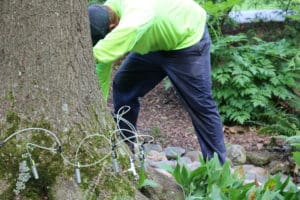 | 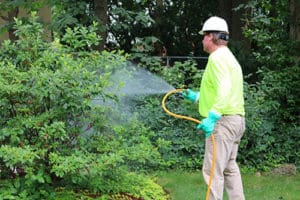 |
What Is The SmartTreat™ Process?
RTEC’S SmartTreat™ process is a highly effective and environmentally sensitive approach to pest management in our suburban environment. The SmartTreat™ process uses the life cycles of insects and diseases and their interaction with the environment to provide more effective pest management solutions all while using fewer chemicals on your property.
Learn More About Our SmartTreat Process
Didn’t Find What You Were Looking For? Check out our Fungus and Bug indexes.
(Learn About Root Rots and Powdery Mildew On Our Tree Fungus Index Page)
Are you worried your tree is sick with one of these diseases? Use our online booking system or call 703.573.3029 to schedule a consultation with an arborist to diagnose your tree diseases.
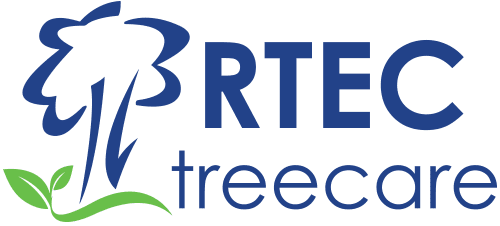
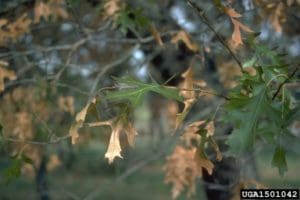 Oak Wilt:
Oak Wilt: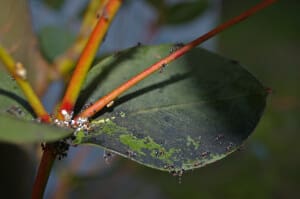 Sooty Mold & Honeydew:
Sooty Mold & Honeydew: Leaf Spot Diseases:
Leaf Spot Diseases: